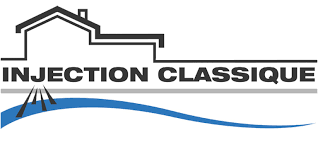How to Remove a Raccoon the Right Way
Raccoons are intelligent and resourceful creatures that can become a nuisance when they invade homes, attics, or yards. While they may appear cute, they can carry diseases and cause significant property damage. Removing a raccoon the right way requires a humane and legal approach to ensure safety for both humans and animals. Below are the best practices for raccoon removal.
1. Identify the Problem
Before taking any action, confirm that a raccoon is the cause of the disturbance. Common signs of a raccoon infestation include:
- Noises in the attic, walls, or chimney at night
- Trash cans frequently tipped over
- Footprints or droppings around your home
- Torn insulation or damaged vents
2. Do Not Attempt to Handle It Yourself
Raccoons can be aggressive when cornered and may carry rabies or parasites. Avoid direct contact and do not try to catch or trap the raccoon without the proper knowledge and equipment.
3. Remove Attractants
Eliminate sources of food and shelter to make your property less inviting to raccoons. Steps to take include:
- Secure garbage bins with tight-fitting lids
- Remove pet food and bird feeders from outdoor areas
- Seal potential entry points in the attic, basement, or crawl spaces
- Trim tree branches that provide access to the roof
4. Use Humane Deterrents
Non-lethal deterrents can help encourage raccoons to leave on their own. Options include:
- Bright lights or motion-activated floodlights in areas they frequent
- Loud noises such as a radio or ultrasonic animal repellers
- Ammonia-soaked rags placed near entry points to mimic predator scents
5. Install a One-Way Exit Door
A one-way exit door is an effective method to remove raccoons from attics or enclosed spaces. This device allows the raccoon to leave but prevents re-entry. Be sure to check for babies before sealing any openings, as mother raccoons may leave them behind.
6. Use a Professional Wildlife Removal Service
If the raccoon refuses to leave or has babies, consider calling a licensed wildlife removal expert. Professionals can safely and legally remove raccoons without harming them, ensuring compliance with local laws.
7. Check Local Laws and Regulations
Many states have specific laws regarding raccoon removal. Some areas prohibit trapping without a permit, while others require relocation to be done by a licensed expert. Always verify the regulations in your region before taking any action.
8. Prevent Future Infestations
Once the raccoon is removed, take preventive measures to avoid future problems:
- Regularly inspect and maintain home structures to close any potential entry points
- Install chimney caps and vent covers
- Keep outdoor spaces clean and free of food waste
Removing a raccoon the right way requires patience, precaution, and adherence to humane and legal practices. By identifying the issue, removing attractants, using humane deterrents, and seeking professional help if necessary, you can safely and effectively resolve the problem. Implementing preventive measures will ensure raccoons do not return, keeping your home and property secure.
